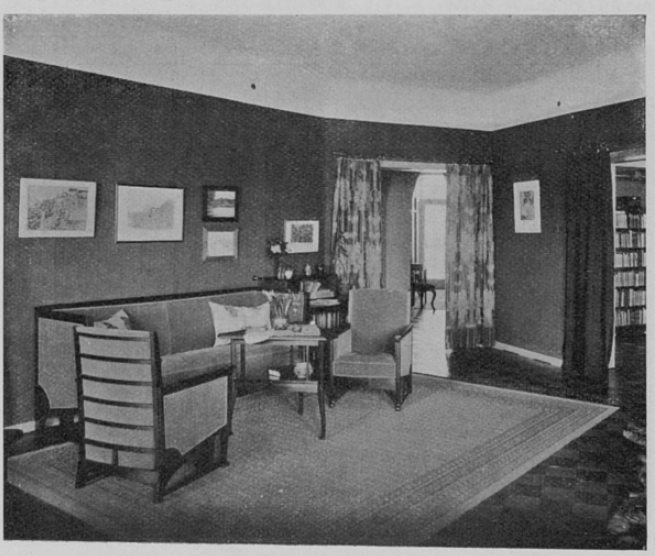Sigurd Frosterus
Sigurd Frosterus, an early 20th-century armchair.
Oak frame with carvings. Upholstered seat and back. Height to seat 42 cm. Width 64 cm. Total height 92 cm.
Restored.
Literature
Picture: Arkitekten 5/5 1914.
More information
Sigurd Frosterus (1876-1956) was a Finnish architectural and artistic influencer who actively sought to bring European modernism into Finnish architecture and visual arts. In the field of fine arts, Frosterus spoke in favor of modern color art, and in architecture he appealed for rational design rather than the dominant national romantic style.
Frosterus graduated as an architect from the Polytechnic College in 1902, and during the same year founded an architectural firm with his fellow student Gustaf Strengell. At the beginning of his career, Frosterus worked for a short time in Weimar for Henry van de Velde, where he adopted artistic influences and innovations. These influences inspired and gave ground to his work throughout his career and ended up being his handprint left in the history of Finnish design. After returning to Finland, Frosterus worked as an art critic and briefly designed interiors for private and public spaces before his career as an architect finally began.
The furniture designed by Frosterus is extensively inspired by the design language adopted from van de Welde and represents the same clear and matter-of-fact style that Frosterus favoured in architecture.
The chair model now for sale at Bukowski is known to have been used by Frosterus in the interior in the home of Helsinki University lecturer Alexis von Kraemer in 1914. The design of the chair coincides with Frosterus’ career at a time when he began to withdraw from public debate and focus on his career as an architect. Frosterus is known to have designed interiors and furniture mainly for his own home, a few other private homes and the Mortgage Association's building on the edge of Helsinki Esplanade.
Still to this day, Sigurd Frosterus’ greatest and by far most acclaimed architectural sites is the Stockmann department store, completed in Helsinki in 1930.















































